New faculty - Fall 2024
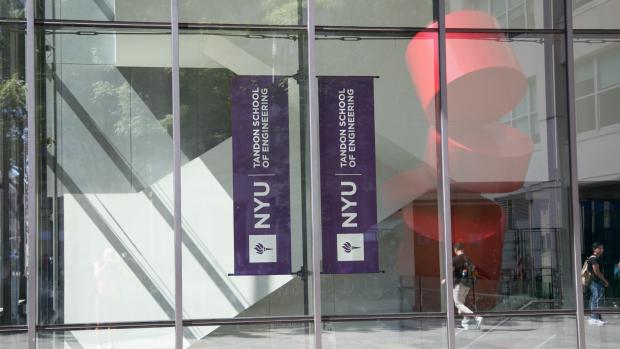
NYU Tandon’s new faculty members are exploring the possibilities of smart buildings, working to make entrepreneurship more inclusive, quantifying the risks of climate change, and a lot more. Whatever their areas of expertise, they share a focus on improving the world — and helping Tandon students do the same.
New Faculty:
Related: Meet our New Faculty Fellows
Jasper Ainsworth
Industry Assistant Professor, Chemical and Biomolecular Engineering
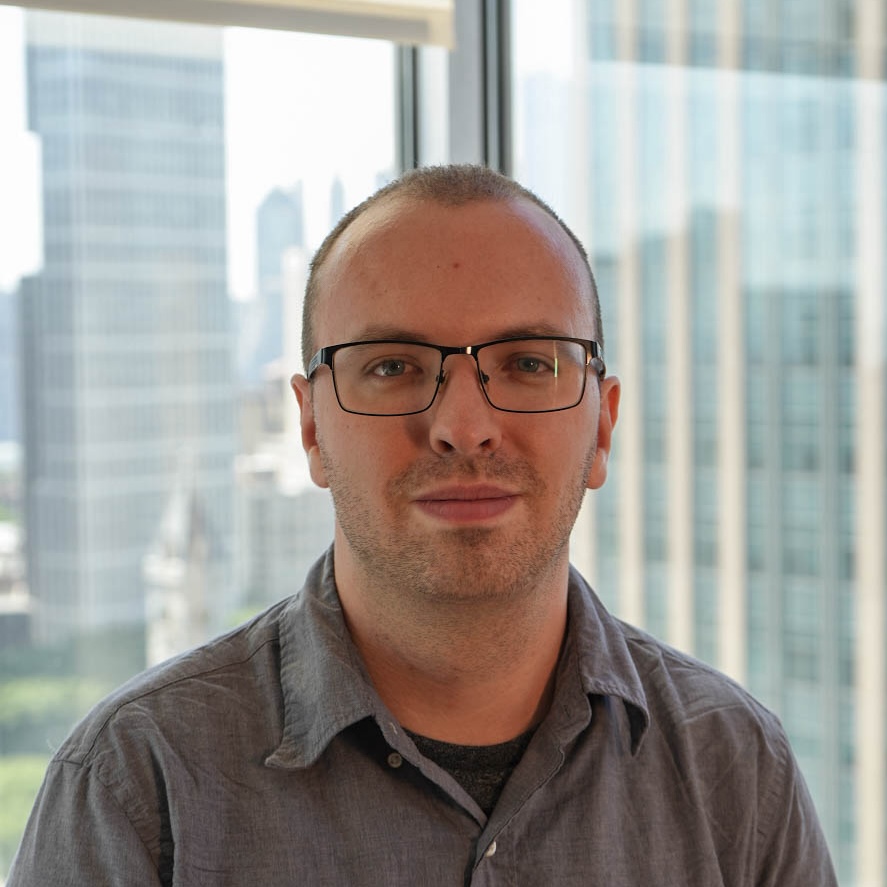 It may be a cliché to describe someone as a born teacher, but the phrase seems perfectly apt when discussing Jasper Ainsworth.
It may be a cliché to describe someone as a born teacher, but the phrase seems perfectly apt when discussing Jasper Ainsworth.
“I was lucky to have many wonderful teachers and mentors who served as my role models,” he says, “and I knew early on this was a path I wanted to follow.”
Growing up on Long Island, he found particular inspiration in his high school chemistry teacher. “I fell in love with the subject and realized that this was the subject I wanted to teach,” he recalls. “I always enjoyed helping my friends and classmates with their chemistry homework and knew I wanted to pursue that further.”
At the State University of New York (SUNY) Binghamton, Ainsworth, in a surfeit of caution, experimented with other majors briefly but quickly realized that his initial choice of chemistry was the correct one. His determination to teach also remained steadfast: “I minored in education, worked at the campus tutoring center, and served as a TA,” he recalls, “and every experience confirmed that this was my life’s goal.”
After college, Ainsworth pursued a Ph.D. in chemistry at Stanford University, where he researched the structure and function of biological copper enzymes. Concurrently, he worked as a TA for multiple chemistry courses, where he realized that teaching undergraduate chemistry was his true calling. “There’s a reason chemistry is required for all STEM majors,” he said, “and making sure all students have that strong foundation in chemistry is so important.” He also volunteered at an under-funded public high school to mentor students in science and research and served as an accommodations coordinator to make sure students with disabilities received the resources they needed to succeed.
Making STEM — and chemistry in particular — more inclusive remains his mission. “After all,” he says, “chemistry is important to almost every other subject you can think of because it affects the whole world around us.”
Mohamad Awada
Assistant Professor, Civil and Urban Engineering
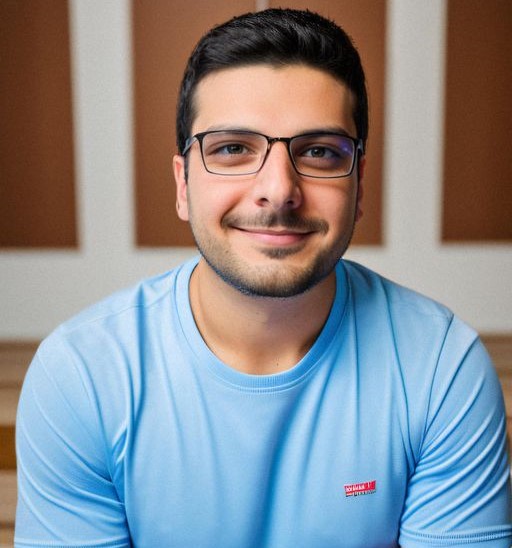 Mohamad Awada had just embarked on his doctoral studies at the University of Southern California’s Viterbi School of Engineering when the COVID-19 pandemic hit, forcing him, along with countless others around the world, to return home and try to create a safe haven against the virus.
Mohamad Awada had just embarked on his doctoral studies at the University of Southern California’s Viterbi School of Engineering when the COVID-19 pandemic hit, forcing him, along with countless others around the world, to return home and try to create a safe haven against the virus.
It was something of a wake-up call. Awada began pondering just how important our living spaces are to the quality of our lives. “The experience got me thinking about the concept of healthy buildings,” he has said. “How do we design, construct, and operate our spaces with health and well-being at the forefront?”
His research now focuses on smart spaces with sensing technology that responds to human needs. Buildings are capable of doing much more than simply providing shelter, he believes; they can actually play an important role in monitoring our physical and mental health and adjusting to make us feel better — an enormous boon given that most of us spend around 90% of our time indoors. Consider, for example, an office that can sense stress and respond by automatically playing soothing music, a classroom that knows when students are getting enervated and lowers the temperature accordingly, or a room that can discern when a senior has forgotten to take vital medications and send a reminder. “Good engineers don’t just build things,” Awada has said. “They ensure that what we build is going to be beneficial to the end user, which in this case ends up being us.”
Awada had earned a bachelor’s degree in Civil Engineering and a master’s in Construction Management from the American University of Beirut before arriving at USC. While working towards his Ph.D. there, he also earned a second master’s, this one in computer science, in order to further his research. That research earned him the university’s Ph.D. Achievement Award, a rare honor given to only a handful of students each year.
He is excited about coming to Tandon, where he aims to establish a lab focused on creating human-centered solutions to enhance the functionality of built environments. And if buildings are your focus, he asserts, there are few better places to be than New York City.
Paola Bardetti
Industry Assistant Professor, Chemical and Biomolecular Engineering
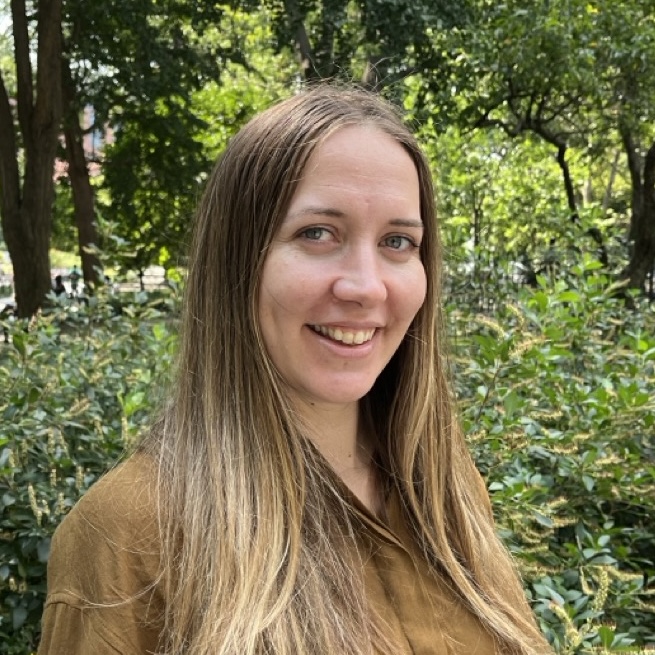 Paola Bardetti is new to Tandon’s Department of Chemical and Biomolecular Engineering but not to NYU. Before becoming an industry assistant professor this semester, she conducted postdoctoral research in the Rojas Lab, part of NYU’s Center for Genomics and Systems Biology. Working with Principal Investigator Enrique Rojas, Bardetti studied the morphology of bacteria like B. subtilis and E. Coli. seeking insight into how they grow into and maintain precise, programmed shapes.
Paola Bardetti is new to Tandon’s Department of Chemical and Biomolecular Engineering but not to NYU. Before becoming an industry assistant professor this semester, she conducted postdoctoral research in the Rojas Lab, part of NYU’s Center for Genomics and Systems Biology. Working with Principal Investigator Enrique Rojas, Bardetti studied the morphology of bacteria like B. subtilis and E. Coli. seeking insight into how they grow into and maintain precise, programmed shapes.
It was that desire to understand cellular processes in a dynamic and quantitative manner that brought her to NYU in 2019, soon after she earned her Ph.D. in Molecular Biology from the University of Salamanca, in Spain. (She also holds an undergraduate degree in Biology and a master’s degree in molecular biology from The University of Milan, Italy.)
Understanding more about those mechanisms can shed light on how bacteria become resistant to antibiotics and help researchers develop novel ways to treat disease. She points out another benefit to her field of study — one that has been much in the news lately: “We are becoming increasingly aware of just how important the microbiome is to our health and well-being,” she says. “It’s all part of the impetus to study microbiology — the chance to make a positive impact in a field as vital as healthcare.”
Bardetti, who worked for a time at Bayer HealthCare Manufacturing after earning her master’s degree, hopes to impart that message to the students in her undergraduate “Introduction to Cell and Molecular Biology” and “Advanced Molecular Biology” courses.
Acknowledging that there is still work to be done before there is true equity in the STEM fields, she also wants to serve as a role model and mentor to her women students (and their male allies). “Science should be accessible to all,” she says, “and my door is always open to students to ensure that they have what they need to succeed.”
Aaron Bernstein
Charles S. Baylis Associate Professor, Computer Science and Engineering
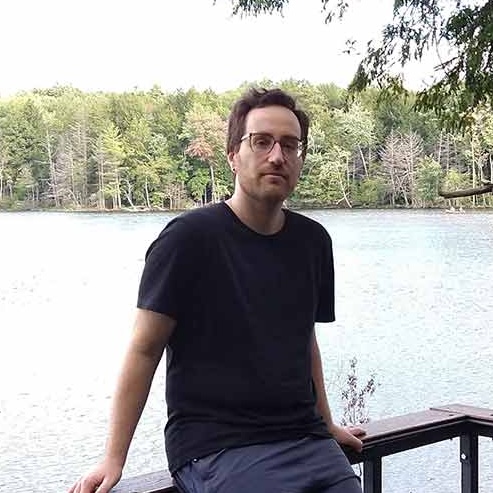 “There’s a certain freedom in working on a problem that’s been open for a long time,” Aaron Bernstein, one of the newest faculty members in the Department of Computer Science and Engineering, has said.
“There’s a certain freedom in working on a problem that’s been open for a long time,” Aaron Bernstein, one of the newest faculty members in the Department of Computer Science and Engineering, has said.
He was alluding to what is known as the negative-weight shortest-paths problem — a conundrum that had puzzled computer scientists since the 1970s, when they confirmed how to identify the shortest path between two points on a graph (a term that refers to a network of vertices connected by links known as edges — the algorithmic equivalent of a complex transportation or social network). Researchers could quantify the “cost” (in time or energy, for example) of moving across a segment by assigning each edge a “weight,” but had not accounted for times when the weight was a negative number: in those instances, the quickest known shortest-path algorithm wouldn’t work.
Along with colleagues from the University of Copenhagen, Bernstein, who holds an undergraduate degree in mathematics from MIT and a Ph.D. from Columbia University, discovered a new algorithm that finds the shortest paths through a graph from a given “source” point to every other point, virtually as fast as existing positive-weight algorithms. (Their research involved segmenting an arbitrary directed graph into a series of tight-knit clusters and then connecting them into a sparser network in which all edges point in the same direction — a configuration known as a directed acyclic graph, or DAG.)
“Negative-Weight Single-Source Shortest Paths in Near-Linear Time,” won them best-paper honors at IEEE’s 63rd Annual Symposium on Foundations of Computer Science (FOCS), one of the field’s most important events, and garnered extensive coverage in Quanta Magazine.
That has been only one of several award-winning papers by Bernstein, who conducted post-doctoral research in the Combinatorial Algorithms and Graph Optimization group at Technische Universität Berlin and held an assistant professorship at Rutgers University before arriving in Brooklyn. He is looking forward to continuing his research here, as well as to teaching a foundational course in algorithms for doctoral students.
“Growing up in Boston I always knew I ultimately wanted to be in New York City, and NYU Tandon’s Department of Computer Science and Engineering is widely known to be a growing and vibrant place,” he explains. “Who wouldn’t want to be where new, exciting things are always happening?”
Emily Black
Assistant Professor of Computer Science and Engineering
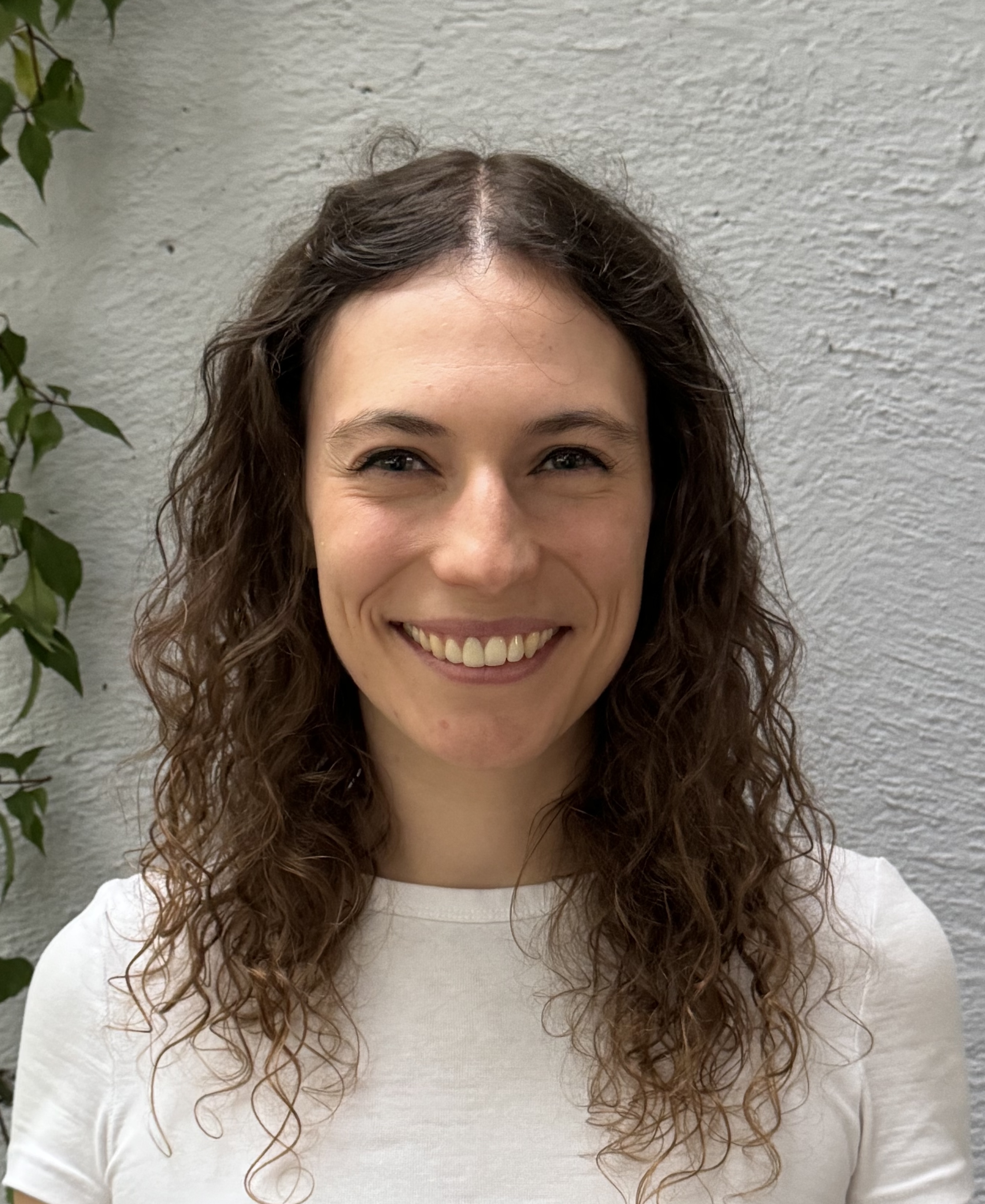
Increasingly, rules governing societal decisions are not just made in government but at tech companies and in academia — anywhere where predictive algorithms are created and reasoned about. But these algorithms do not always work in an equitable fashion, and there are increasingly many headlines as algorithms are used in more and more sensitive places: for example, racially biased healthcare distribution systems, image recognition systems, or tax audit selection systems. Emily Black explains, "While we have a good start with the AI Safety Executive Order and resulting regulatory guidance, as my recent work has shown, there are ways to game the requirements that exist, as well as ways to strengthen current laws that prevent AI discrimination through new interpretations. I would love for our work at NYU to continue to inform effective legislation around preventing AI discrimination."
Giuseppe Maria de Peppo
Industry Associate Professor, Chemical and Biomolecular Engineering
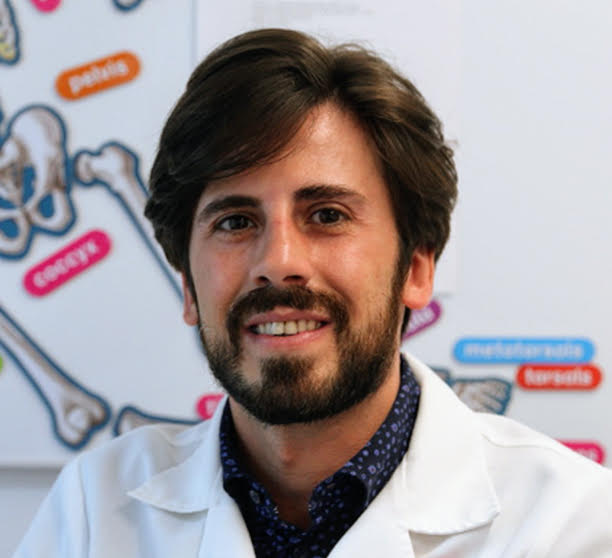 “In simple words, I do orthopedic research with the help of stem cells, which are the building blocks of the body and thus very powerful for both research and therapy,” Giuseppe Maria de Peppo explains. “For example, one can use stem cells to create models of development and disease, to test drugs and implant materials, and to engineer tissues for replacement therapies. I also work with orthopedic implants and biomaterials, to improve their properties for clinical applications. For example, we use stem cells to functionalize the surface of orthopedic devices with coatings of high biological relevance that could enhance their reception into the human body.”
“In simple words, I do orthopedic research with the help of stem cells, which are the building blocks of the body and thus very powerful for both research and therapy,” Giuseppe Maria de Peppo explains. “For example, one can use stem cells to create models of development and disease, to test drugs and implant materials, and to engineer tissues for replacement therapies. I also work with orthopedic implants and biomaterials, to improve their properties for clinical applications. For example, we use stem cells to functionalize the surface of orthopedic devices with coatings of high biological relevance that could enhance their reception into the human body.”
It was while studying for a master’s degree in medical biotechnology at Bicocca University in Milan, that de Peppo first learned of the possibilities of engineering human tissues using stem cells and biomaterials. He had been interested in engineering since his childhood in Lucera, a small town in the Puglia region of Italy, and he hit upon the idea of working in the field of regenerative medicine. As part of his master’s studies, he was offered the chance to collaborate with researchers at La Stazione Sperimentale per la Seta, an institute of applied research connected to Milan’s Chamber of Commerce, where he focused on engineering a new biomaterial from natural polymers. His next stop was the International School of Bioinformatics in Valencia, Spain, where he learned about sequence assembly, genome annotation, protein modeling, and protein interaction networks.
De Peppo was awarded a prestigious Marie Skłodowska-Curie Fellowship in 2007, and with that support, he moved to Sweden to earn a Ph.D. at the University of Gothenburg. There, he explored the use of human embryonic stem cells for bone regeneration, a project that had great potential since embryonic stem cells can be produced in large quantities and can be turned into all types of cells. In 2009, he headed to France’s Université Paris Cité to learn about the use of bioreactors to support the growth of clinical-size bone grafts for replacement therapies. (He explains that his doctoral studies did not focus on tissue engineering to the exclusion of everything else; at one point he collaborated with a nanotechnology team at Chalmers University in Sweden on a project that sought to enhance the therapeutic potential of metallic implants by using colloidal lithography.)
In 2011, de Peppo came to New York — a city he had always loved — to conduct post-doctoral research at New York Stem Cell Foundation Research Institute, a nonprofit whose mission is to speed the discovery of cures for major illnesses. “It was the perfect place for engineering more complex tissues for personalized applications in patients,” he recalls, “and given the potential medical and social impact of my work, I was appointed leader of the Stem Cell and Tissue Engineering team, which focused on the use of stem cells to develop research models and therapies for aiding patients suffering from musculoskeletal conditions.”
De Peppo next did a stint as a research director at Mirimus, a company that designs models for in vivo studies. In the course of his work in New York City, de Peppo met Elisa Riedo, Tandon’s Herman F. Mark Professor in Chemical and Biomolecular Engineering, and began collaborating with her as a visiting scholar. This year, he joins Tandon as an industry associate professor; he’ll be teaching graduate-level courses and is excited about introducing Tandon’s doctoral students to his field.
“Tissue engineering holds the potential to revolutionize medicine by growing replacement tissues and organs on-demand, and thus to improve the health status and quality of life of millions of people worldwide,” he says. “Someday, we’ll be able to grow patient-specific bone on-demand and circumvent the complications associated with current treatments for conditions requiring bone reconstruction. This could save the lives of millions of patients, especially kids suffering from devastating bone cancers whose bones are still growing and cannot be treated with alloplastic materials.”
Cassandra Diaz-Allen
Industry Assistant Professor, Chemical and Biomolecular Engineering
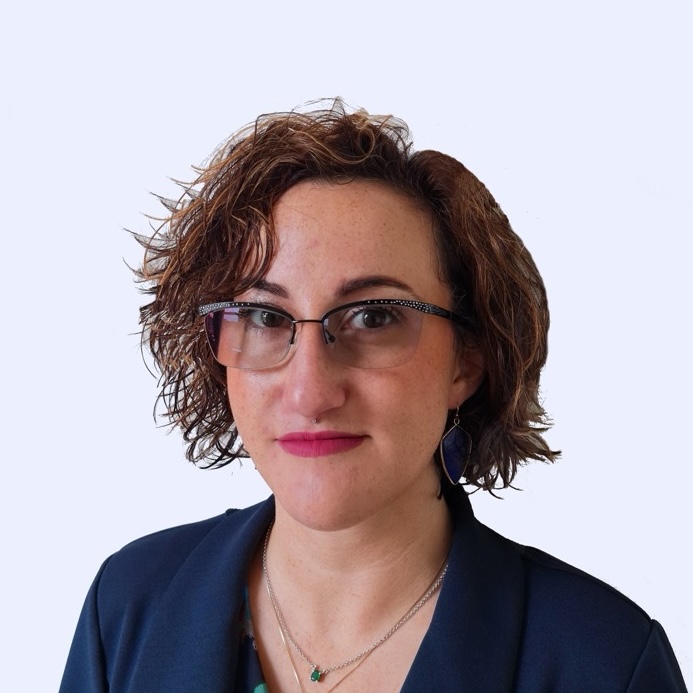 Cassandra Diaz-Allen’s CV is an impressive document, replete with publications, presentations, and invited lectures, along with descriptions of research projects encompassing topics like NMR dereplication methods and traditional ethnopharmaceutical preparations, and skills such as thin-layer chromatography and mass spectrometry.
Cassandra Diaz-Allen’s CV is an impressive document, replete with publications, presentations, and invited lectures, along with descriptions of research projects encompassing topics like NMR dereplication methods and traditional ethnopharmaceutical preparations, and skills such as thin-layer chromatography and mass spectrometry.
What that CV does not capture, however, is the sheer joy she takes in her work and the enthusiasm she brings to every endeavor.
Diaz-Allen, who earned her doctoral degree in Pharmaceutical Sciences from Ohio State University in 2022, has deep experience in natural products chemistry, which focuses on substances produced by living organisms, including plants, fungi, and lichens. At Tandon, she’ll be teaching undergraduate courses in general chemistry and biochemistry with the help of plenty of visual aids.
“I’m something of an expert on visual aids like animations and 3D models,” she says. “Not only are they engaging, but when you’re discussing microscopic processes that you can’t readily replicate for an entire class to see, they become essential tools.”
Diaz-Allen’s teaching philosophy revolves around acknowledging that everyone learns differently and sometimes requires individualized attention, and she hopes students feel free to take advantage of her office hours. She remembers well what it’s like to wrestle with dense texts — and the relief she felt when she was able to grasp the basic concepts of chemistry, and furthermore, find real-life applications of those concepts, particularly in health and medicine. This epiphany made her fall in love with biochemistry.
The daughter of a blues singer mother, she was encouraged early on to be creative, and that has resulted in not only innovative visual aids in the classroom but a unique personal style. Students should not be surprised to see her wearing clothes with STEM-related motifs or a DNA-themed dress. “This is what happens when you’re a chemistry nerd who happens to love sewing,” she says.
Augustin Guibaud
Assistant Professor of Mechanical and Aerospace Engineering
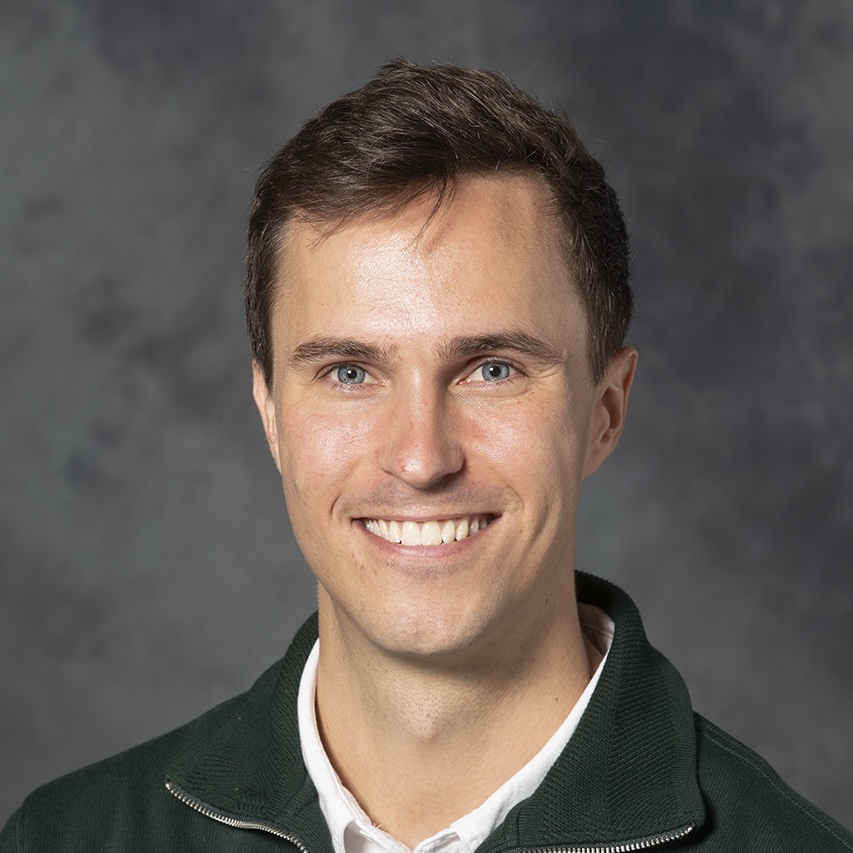 There’s a common theme running through Augustin Guibaud’s research: fire. And just as that element of nature has inspired countless works of literature, visual art, and music, it has propelled many and varied areas of scientific inquiry.
There’s a common theme running through Augustin Guibaud’s research: fire. And just as that element of nature has inspired countless works of literature, visual art, and music, it has propelled many and varied areas of scientific inquiry.
As a doctoral student at the Sorbonne’s Institut Jean Le Rond d'Alembert, Guibaud — a former officer in the Armée de l'air, France’s air force — began studying how fires spread and smoke behaves in microgravity environments such as space capsules. Because of the unique conditions posed by microgravity, which is a phenomenon in which people and objects appear to be weightless, an entirely new model was required: to that end, his research group constructed an experimental apparatus to measure flame-spread characteristics in parabolic flights, modifying pressure, oxygen concentration, and flow rate to create varying atmospheric conditions. (Parabolic flights reproduce microgravity conditions in an aircraft by alternating upward and downward arcs.)
On April 15, 2019, just a few months before Guibaud completed his Ph.D. studies, a massive fire broke out near the roof of the medieval Catholic cathedral, Notre-Dame de Paris, severely damaging the iconic structure. While he continued his fundamental work on flame extinction, based on the experiments he had done on parabolic flights, he became interested in learning how it applied in dense urban settings and within the realm of heritage conservation. “I initially felt like all my space-related research was useless since Notre-Dame was not in orbit!” he says. “However there are unexpected overlaps in the fundamental aspects of spacecraft and historic buildings fire safety. It motivated me to expand my knowledge to support heritage conservation and prevent future dramatic cultural destruction. I believe that as researchers, we have a duty to get out of our comfort zones and find as many practical applications for our discoveries as possible.”
As a postdoctoral researcher at University College London (UCL), Guibaud developed a new framework for fire-spread modeling in densely built areas and served as a member of the structural research group studying the Notre-Dame fire for the Centre national de la recherche scientifique (National Centre for Scientific Research). Then, in 2021, he became a full-time lecturer at UCL, where, among other accomplishments, he created a rapid data acquisition tool for stochastic wildfire simulations in the Mediterranean area.
Guibaud was distressed to read in 2023 about the Canadian wildfires that caused a thick orange haze to permeate the skies over several areas in the eastern U.S., including New York City. He responded by writing an op-ed for Time magazine that asked: “For those of us living in areas hundreds of miles from the fires, how should we adapt?”
“Right now, too few researchers are studying wildfire smoke from generation to inhalation. We just don’t know enough yet to fashion effective public policy,” he wrote. “We can’t always predict with total accuracy how high and far the smoke will travel. We simply don’t know what’s in the smoke once it mixes with air and travels to cities with their own sources of pollution. And we’re only beginning to grasp what its health effects might be, especially on young children, the elderly, and those with pre-existing lung and eye conditions.”
Guibaud will try to answer those questions here at NYU Tandon, in a faculty position that will find him working in the third world capital of his career. “New York is the most dynamic living lab in the world for a researcher like me,” he says. "I look forward to collaborating with great researchers at NYU's Center for Urban Science + Progress to help urban communities across the globe."
In addition to his research, he is excited to be teaching in the Department of Mechanical and Aerospace Engineering under the direction of Chair Katsuo Kurabayashi. “He’s got some visionary — and fun — ideas.” Guibaud says. “We’re planning a new undergraduate course that will teach things like heat transfer, propulsion, and friction using toy models called pop-pop boats, so I think that will probably be very popular with students.”
Bertha Jimenez
Industry Assistant Professor, Technology Management and Innovation
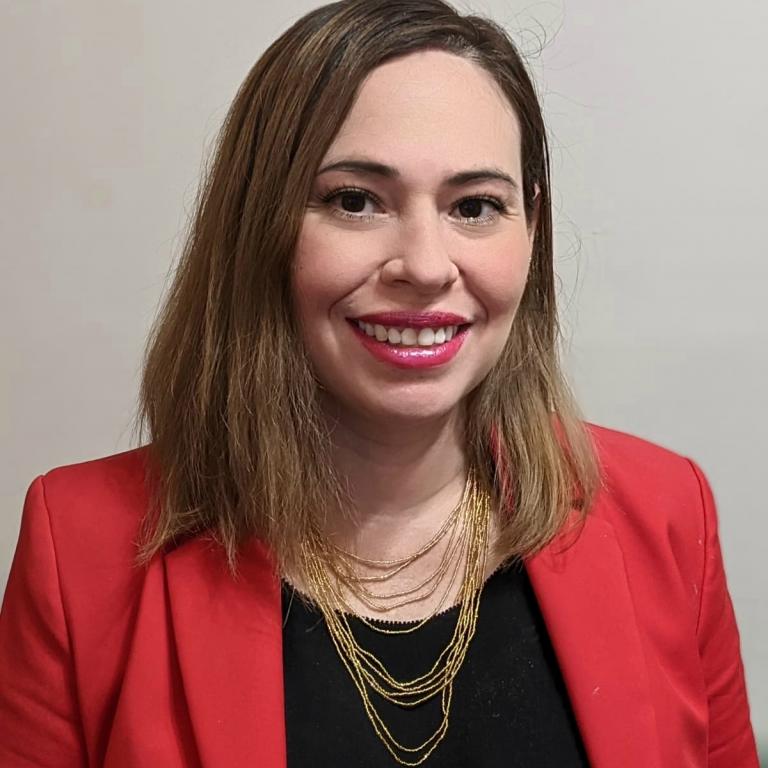 Bertha Jimenez has been a familiar — and much admired — presence around NYU Tandon for over a decade. In 2015, as she neared completion of her Ph.D., in a story headlined “A Big Idea for a Big App that Could Help Control Waste in the Big City,” the Tandon website reported that her team had reached the finals of the New York City Economic Development Corporation’s BigApps NYC competition, with an idea for an online marketplace for industrial by-products.
Bertha Jimenez has been a familiar — and much admired — presence around NYU Tandon for over a decade. In 2015, as she neared completion of her Ph.D., in a story headlined “A Big Idea for a Big App that Could Help Control Waste in the Big City,” the Tandon website reported that her team had reached the finals of the New York City Economic Development Corporation’s BigApps NYC competition, with an idea for an online marketplace for industrial by-products.
That idea ultimately turned into her own entrepreneurial venture, RISE (Real-time Industrial Symbiosis Exchange), which collected the spent grain left after breweries completed the beer-making process and milled it into a highly nutritious and nutty-flavored flour for use in commercial bakeries.
During the COVID-19 pandemic, Jimenez pivoted to consulting for a series of major companies, including the makers of such iconic beer brands as Budweiser and Corona, but she became excited when she learned that the Department of Technology Management and Innovation, the very department where she had earned her doctoral degree, was seeking a new faculty member.
“I had always loved mentoring, even as a graduate student,” she recalls, “and because of my industry experience, I knew I had a lot of practical knowledge to impart.”
Jimenez’s classes will be focused on entrepreneurship, covering such topics as how to navigate the exhilarating but fraught early stages of launching a company and how to forge industry connections. Her future plans also involve curating solutions and speakers from around the world to showcase how the intersection of technology and inclusivity can open up possibilities for people of all levels of development, ability and support needs. “There are few things as gratifying as seeing a good idea blossom into a thriving enterprise,” she says, “and I’d like as many people as possible to experience that.”
Pavel Kots
Assistant Professor, Chemical and Biomolecular Engineering
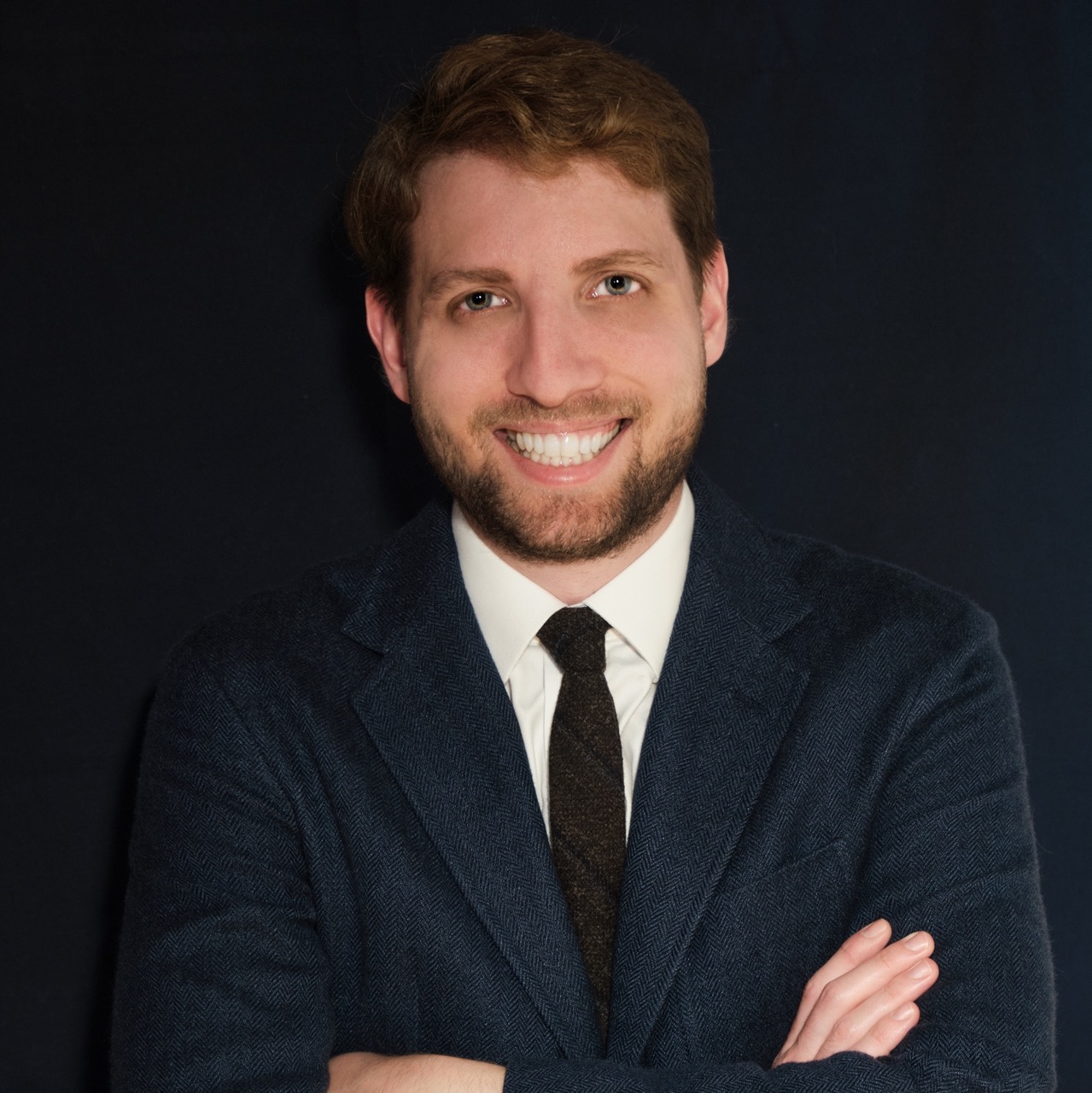 Experts report that a million plastic bottles are purchased somewhere on the planet every minute and some five trillion plastic bags are used every year. With at least half of those items discarded after a single use, it’s imperative to find efficient, new ways to deal with the 400 million tons of plastic waste generated each year.
Experts report that a million plastic bottles are purchased somewhere on the planet every minute and some five trillion plastic bags are used every year. With at least half of those items discarded after a single use, it’s imperative to find efficient, new ways to deal with the 400 million tons of plastic waste generated each year.
Pavel Kots — who worked as a postdoctoral researcher at the University of Delaware and a process development engineer at the specialty chemical company Evonik before arriving at Tandon — is deeply immersed in the problem. While in Delaware, he helped discover a method that uses catalysis to upcycle hard-to-handle plastic waste streams, like polyvinyl chloride (commonly known as PVC), which usually decomposes into corrosive hydrochloric acid. His two-step procedure was published in a 2023 issue of Nature Sustainability.
Kots, who earned his Ph.D. in Physical Chemistry at Moscow State University in 2018, explains that while it was already possible to upcycle plastics uncontaminated by chlorine or other such substances into useful products like industrial lubricants, real-world waste streams are significantly more complex and problematic. He and his fellow researchers focused on PVC-contaminated mixtures, specifically because they are so challenging to handle with standard methods. “We thought that if we could deal with PVC, we could handle almost anything,” he has said.
He is looking forward to teaching and researching in New York, which has become an important center of sustainability, circular processes, and climate technologies. His classes and labs will consider the problems facing the planet in a broader context, encompassing chemistry, engineering, economics, and process design, among other factors. “It is essential to train future engineers to formulate the same problem from different perspectives, to be able to put it in various contexts at the same time,” he says. “It’s not just OK to consider more than one point of view, it’s essential.”
Shizhu Liu
Industry Associate Professor, Technology Management and Innovation
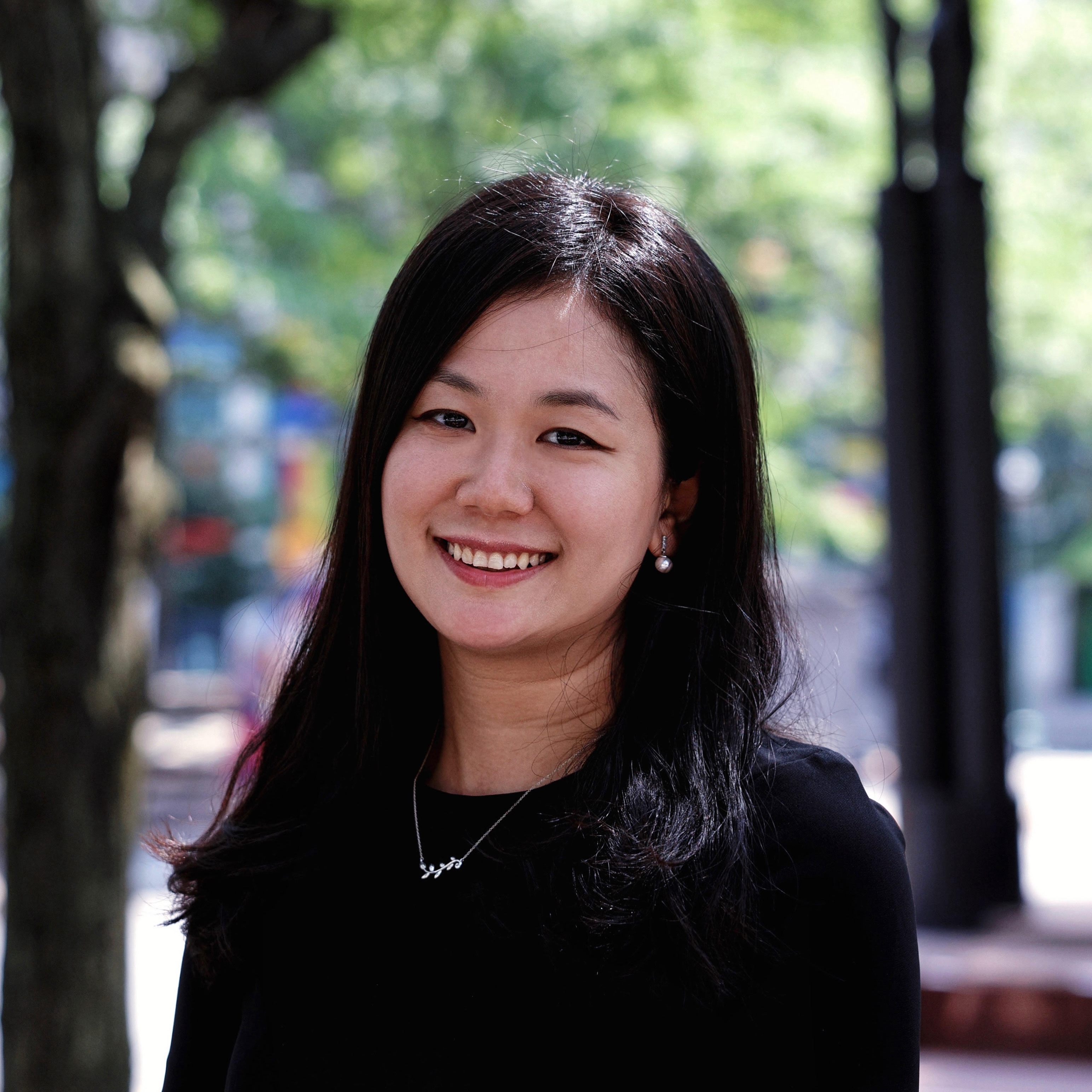 Shizhu Liu’s connections to NYU run deep: in 2018, after studying with Erwin Lutwak, Gaoyong Zhang, and Deane Yang, she earned her Ph.D. in Mathematics here, and during her graduate studies, she discovered both a talent and a love for teaching, thanks to her concurrent role as an adjunct instructor of calculus and statistics for social science. Upon graduating, she became a clinical assistant professor of mathematics at NYU Courant, a position she held until joining Tandon’s Department of Technology Management and Innovation. In her new role, she serves as an industry associate professor and the deputy director of the Management of Technology (MoT) master’s program.
Shizhu Liu’s connections to NYU run deep: in 2018, after studying with Erwin Lutwak, Gaoyong Zhang, and Deane Yang, she earned her Ph.D. in Mathematics here, and during her graduate studies, she discovered both a talent and a love for teaching, thanks to her concurrent role as an adjunct instructor of calculus and statistics for social science. Upon graduating, she became a clinical assistant professor of mathematics at NYU Courant, a position she held until joining Tandon’s Department of Technology Management and Innovation. In her new role, she serves as an industry associate professor and the deputy director of the Management of Technology (MoT) master’s program.
Her goal in teaching and mentoring has always been clear, she says: “to fully support NYU students in their successful scholarly and professional endeavors.” That dedication helped win her a Golden Dozen Teaching Award, an honor for which she was nominated by fellow faculty members and students.
It might be an understatement, however, to call what drives Liu mere dedication: in addition to her teaching duties, she has mentored students in the Dean's Undergraduate Research Fund projects; advised the NYU student chapter of the Society for Industrial and Applied Mathematics; directed Courant’s Mathematics in Finance Summer Bootcamp; and organized an astonishing 20 to 30 NYU teams each year for the international Mathematical Contest in Modeling/Interdisciplinary Contest in Modeling (MCM/ICM) — an event that has resulted in scholarships, deepened faculty-student collaboration, and provided them with valuable learning and project experiences beyond the classroom.
She anticipates even more opportunities for mentoring as a member of the Department of Technology Management and Innovation. “Engineering students are always interested in the practical applications of what they’re learning, and within TMI, I can help them apply their knowledge to solve real-world business problems,” she says. “I’m especially excited about becoming the deputy director of the MoT master’s program because that gives me the chance to be involved in curriculum development and career placement, and provide hands-on guidance.”
Liu, who earned her undergraduate degree in Economics from Zhejiang University and her master’s degree in Applied Economics from Georgetown, feels a strong connection with TMI students. “My background is very interdisciplinary,” she says, “and TMI is a very interdisciplinary department.” She looks forward to fostering an environment where students can thrive academically and professionally, using technology to tackle complex business and management challenges.
Yuki Miura
Assistant Professor, Mechanical Engineering and Center for Urban Science + Progress
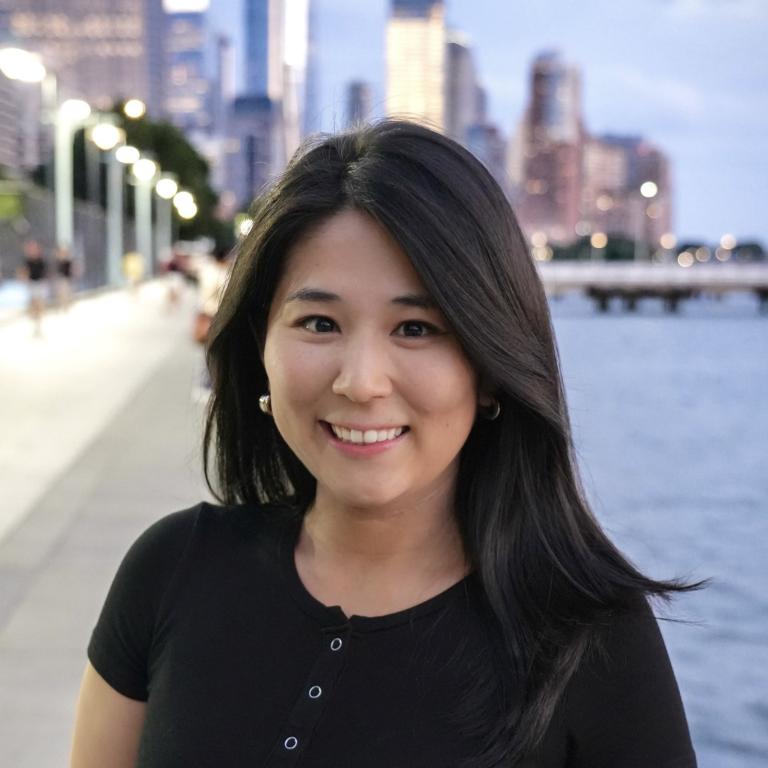
In late 2023, when a New Yorker reporter needed to learn about coastal flooding and the seawall the city is planning to build in Lower Manhattan, he turned to Yuki Miura, one of the Department of Mechanical and Aerospace Engineering’s newest faculty members.
In the course of her research, Miura had modeled the effects that a severe weather event like a hurricane might have on the city and was ideally positioned to describe the devastation that could occur.
It’s a frightening scenario, but Miura is level-headed and clear about the solution: it involves addressing climate change head-on. “We need to solve the problem from the bottom,” she told the reporter, pointing out that failure to do so will expose our communities and economies to escalating threats from floods, heatwaves, and other hazards.
Miura, who grew up in Tokyo, initially considered becoming an architect. “I had an unusual ability, even as a child, to look at a printed floor plan and envision it in 3D,” she says. After earning a bachelor’s degree in System Design Engineering from Keio University, she came to the U.S. to study at Columbia University. “If you’re interested in infrastructure and the built environment, there’s no place like New York City,” she says.
While earning her doctoral degree in Civil Engineering and Engineering Mechanics, her focus crystallized. “The MTA approached the research group I was in for help,” she recalls. “We modeled how future flood events would affect their subway systems, analyzing potential protective measures’ effectiveness. It was the first time I had seen risk analysis in action, and it was fascinating. After the project, I have started working on developing methodologies to optimize socio-economically sound solutions against flooding as resources are always limited.”
Miura got a first-hand look at what it was like working with public-sector agencies while at Columbia but wanted to round out her skill set by working in private industry; she landed at Morgan Stanley just as the firm was forming a climate risk management team, in order to understand climate risks to various businesses. “We helped them define what climate risk might mean for the businesses and quantify how much climate-related risks would impact the business,” she says.
While Miura — who will also be a faculty member at Tandon’s Center for Urban Science + Progress — enjoyed learning about corporations and their decision-making, she is excited to continue her research on data-driven, implementable solutions to the risks posed by climate change at NYU where she is confident, will be the perfect place for that. “I really admire both Katsuo Kurabayashi, who chairs the Department of Mechanical and Aerospace Engineering, and Maurizio Porfiri, who directs CUSP,” she says. “I know I’ll get all the support I need in my research and teaching, and I’m looking forward to providing that same type of support for my students.”
___________________________________________________________________________
Manny Patole
Industry Assistant Professor, Center for Urban Science + Progress
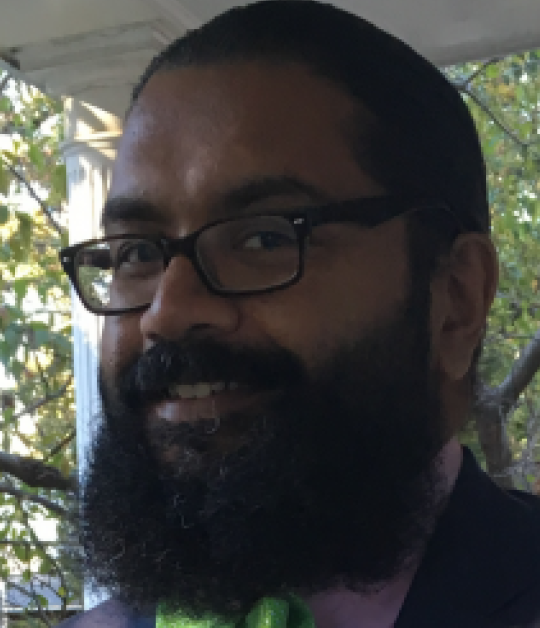 Manny Patole has a distinctly unique perspective on NYU and Tandon: his new post as an industry assistant professor at Tandon’s Center for Urban Science + Progress is the next step in a journey involving a succession of roles in higher education. “I’ve always believed in grasping opportunities as they come,” he says of his varied roster of positions.
Manny Patole has a distinctly unique perspective on NYU and Tandon: his new post as an industry assistant professor at Tandon’s Center for Urban Science + Progress is the next step in a journey involving a succession of roles in higher education. “I’ve always believed in grasping opportunities as they come,” he says of his varied roster of positions.
The journey started simply enough: Patole earned his bachelor’s degree in political science from NYU in 2007 — the same year he received a graduate certificate in global affairs from the school. He also holds a master’s degree in urban planning from NYU Wagner, earned in 2016 (this after a brief defection to the University of Dundee for a Master of Laws, with a specialization in water governance and conflict resolution).
But to follow his career trajectory in any depth is to understand that Patole brings a whole new meaning to the term Renaissance Man.
At NYU alone, he has held the following titles: Coordinator of Special Projects at what was then known as the NYU Polytechnic School of Engineering, Assistant Operations Manager in the Department of Athletics, Faculty HR Affairs Specialist with NYU's Office of Global Faculty Development, Guest Lecturer at NYU Steinhardt, Co-City Fellow and Project Manager at the NYU Marron Institute of Urban Management, CUSP Faculty Mentor and Capstone Advisor, and Adjunct Faculty with NYUs Gallatin, Tandon and Wagner schools.
Patole is also deeply involved in urban resilience and sustainability issues and community engagement. He has interned in the Energy and Environment Division of the U.N. Development Program; held a Water Diplomacy Fellowship; guest-lectured at the University of Connecticut; analyzed policy and data as Excelsior Service Fellow in the NYS Office of Parks, Recreation & Historic Preservation; completed an Institute for Nonprofit Practice Fellowship; worked as a consultant on issues of automation, data management, and environmental governance for a variety of public- and private-sector clients; and, most recently, served as a community director for a Baton Rouge-based tech firm to bridging the digital divide by bringing broadband internet to underserved areas.
His other activities include serving as a Board Member and Chair of the Planning Committee for the Municipal Arts Society of NYC, an Advisory Board Member of FLUSH, Co-Director of the Critical Voices Working Group at NYU, Steering Committee Member for NYU's Climate Change Initiative, Steering Committee Member of the American Planning Association's Water and Planning Network, and most recently, an Advisory Board Member of NYCs Climate Film Festival.
At CUSP, he’ll bring all that experience to bear in courses on civic analytics, environmental infrastructures, data governance and ethics, as well as a variety of other topics. His goal is to educate students who understand that no issue exists in a silo and that you can’t resolve today’s problems with yesterday’s solutions.
“Of course, the world is facing major challenges, but we have to think of them as opportunities, rather than threats,” he asserts. “And it’s important to keep in mind that change never happens all at once; it’s incremental but it’s happening. As long as communities, government agencies, businesses, and academics work together, it will continue to happen.”
Renyuan Xu
Assistant Professor of Finance and Risk Engineering
 Renyuan Xu has always been passionate about using stochastic analysis and probability to quantify uncertainties and improve individual decision-making. Her research journey began at UC Berkeley, where she pursued her Ph.D. and focused on the mathematical modeling and equilibrium analysis of stochastic systems with large populations, leveraging the powerful concept of mean-field approximation originating from physics.
Renyuan Xu has always been passionate about using stochastic analysis and probability to quantify uncertainties and improve individual decision-making. Her research journey began at UC Berkeley, where she pursued her Ph.D. and focused on the mathematical modeling and equilibrium analysis of stochastic systems with large populations, leveraging the powerful concept of mean-field approximation originating from physics.
After graduating from UC Berkeley, Xu became a Hooke Research Fellow at the University of Oxford. There, she broadened her research interests and worked on topics related to decision-making and risk analysis in complex financial markets, as well as machine learning theory through the lens of stochastic analysis.
Before joining NYU, Xu spent three fruitful years at the University of Southern California as a Gabilan Assistant Professor, collaborating with students and colleagues with different domain expertise. During this period, she developed an interest in interdisciplinary methodologies that integrate applied probability, statistics, and optimization. Her work laid the theoretical foundation for high-stakes decision-making problems in modern large-scale systems, with applications in financial markets, energy systems, and e-commerce platforms.
Renyuan Xu has received several prestigious awards, including the 2022 J.P. Morgan AI Research Faculty Award, the 2023 SIAM Activity Group on Financial Mathematics and Engineering Early Career Award, and the 2024 NSF CAREER Award. Since 2021, she has been co-organizing the World Online Seminar on Machine Learning in Finance. She also served as the program co-chair of the 3rd ACM International Conference on AI in Finance (ICAIF) in 2022 and as the finance area chair of the Oxford Machine Learning Summer School in 2022 and 2023.
Xin Zhang
Assistant Professor, Finance and Risk Engineering
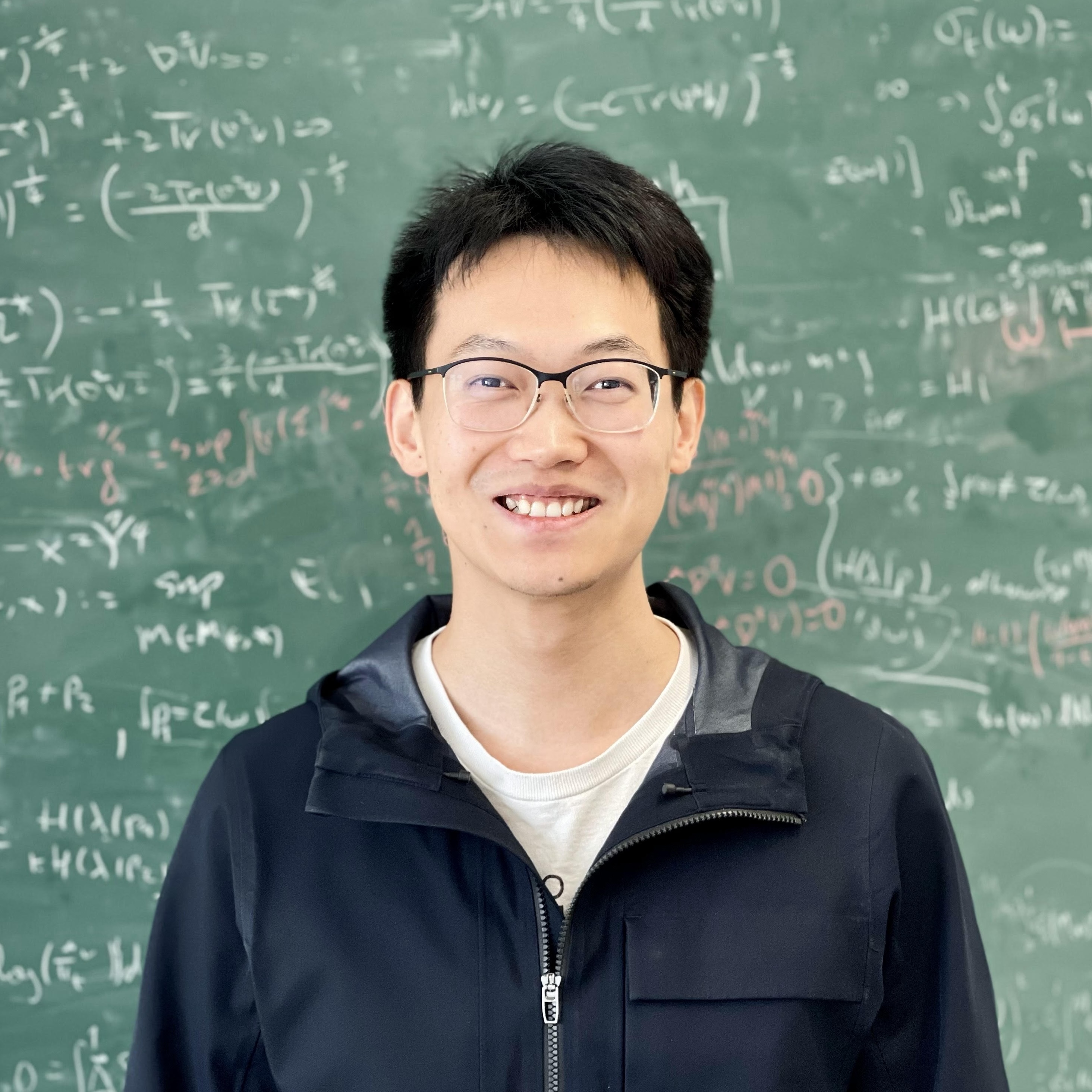 Last year, when Nizar Touzi became the new chair of NYU Tandon’s Department of Finance and Risk Engineering (FRE), his vision included making the School — already home to one of the most rigorous and highly regarded quant master’s programs in the nation — an important hub of applied financial mathematics research.
Last year, when Nizar Touzi became the new chair of NYU Tandon’s Department of Finance and Risk Engineering (FRE), his vision included making the School — already home to one of the most rigorous and highly regarded quant master’s programs in the nation — an important hub of applied financial mathematics research.
With Xin Zhang’s arrival as an assistant professor, that vision is another step closer to reality.
Zhang, who previously worked in the University of Vienna’s Department of Mathematics, under Professor Mathias Beiglböck, is focused on optimal transport, stochastic analysis and control, and viscosity solutions for nonlinear partial differential equations. And while those topics may seem esoteric to a layperson, they have practical importance in the realm of quantitative finance. (For example, optimal transport theory, which is used to measure the distance between two distributions, can help finance professionals build calibrated models with parameters consistent with market observations.)
At Tandon, he is teaching a course in Dynamic Optimization under Strategic Interaction, which will touch upon game theory, strategic decision-making, duopolistic markets (when two companies dominate, such as in the case of Visa and MasterCard), production of exhaustible resources, mean field control, and a host of other topics.
He cautions that prospective students should have a good knowledge of probability theory and calculus, as well as a basic familiarity with stochastic processes, but is confident that anyone admitted to FRE’s program will be well-equipped to tackle it.
Zhang earned his Ph.D. in Mathematics from the University of Michigan, Ann Arbor, in 2021, and has a string of laurels to his credit, including first-place finishes in multiple mathematics competitions in his native China, a Rackham Predoctoral Fellowship Award, and a Sumner B. Myers Thesis Award at the University of Michigan. He is excited to be working within FRE. “If you are involved in the world of financial engineering, you know the name Nizar Touzi,” he says, “so I feel very honored to have a professorship in his department.”
See also Assistant Professor of Electrical and Computer Engineering Sai Zhang, who is incoming this fall.
New Faculty Fellows
The Faculty Fellowship Program aims to attract and support young scholars and educators from various backgrounds — and with research interests and expertise that span a wide range of computer science areas. This year, we’re welcoming three dynamic new fellows:
Nairen Cao
Faculty Fellow
 In the era of big data, processing large-scale graphs with millions of nodes presents significant challenges. Traditional sequential algorithms often lack efficiency, necessitating the development of parallel or distributed algorithms that can perform multiple tasks concurrently. Nairen Cao's research focuses on creating efficient parallel algorithms to address these challenges.
In the era of big data, processing large-scale graphs with millions of nodes presents significant challenges. Traditional sequential algorithms often lack efficiency, necessitating the development of parallel or distributed algorithms that can perform multiple tasks concurrently. Nairen Cao's research focuses on creating efficient parallel algorithms to address these challenges.
Cao — who earned his doctoral degree from Georgetown in 2022 and worked as a postdoctoral researcher at Boston College before coming to Brooklyn — focuses on what is known as the Single-Source Shortest Path (SSSP) problem, which entails finding the shortest paths from a single source node to all other nodes in order to enhance efficiency and scalability. He also studies correlation clustering, which seeks to partition a graph into clusters based on similarity and which is important in such applications as image segmentation and social network analysis.
Cao has a strong theoretical background and a notable publication record in prestigious conferences, such as the Symposium on Discrete Algorithms (SODA), Principles of Distributed Computing (PODC), European Symposium on Algorithms (ESA), Symposium on Theory of Computing (STOC), and Symposium on Parallelism in Algorithms and Architectures (SPAA), and his work has garnered significant attention from his peers. While his research may seem theoretical or complex to laypeople, its applications are far-reaching and impactful. “ChatGPT needs parallel algorithms, and we wouldn’t be able to compare long sequences, like those in DNA, without them,” he explains. “Processing electronic health records, predicting the weather . . . it all involves parallel algorithms.”
Dishita Turakhia
Faculty Fellow
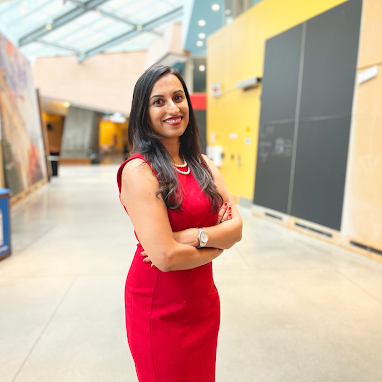 While many computer scientists are now building tools for machine learning, Dishita Turakhia is dedicated to creating tools that enhance human learning.
While many computer scientists are now building tools for machine learning, Dishita Turakhia is dedicated to creating tools that enhance human learning.
Before joining NYU Tandon, Turakhia earned her Ph.D. at the Massachusetts Institute of Technology, where she was a member of the school’s Computer Science & Artificial Intelligence Laboratory (CSAIL) — and was featured in multiple MIT news stories about her research. Among her notable projects: an adaptive basketball hoop that enables learners to train effectively by dynamically adjusting the hoop size and height to challenge players as they improve, and a novel system for teaching digital fabrication skills like 3D printing and laser-cutting to kids by leveraging their interest in video games. These projects exemplify Dr. Turakhia’s approach to designing systems for skill learning grounded in human-centric theories.
At Tandon, she’ll be teaching a foundational course in human-computer interaction, a discipline she became interested in via a somewhat circuitous route.
A native of Mumbai, Turakhia initially earned a bachelor’s degree in architecture in 2008, working on sustainable building projects with tribal communities in Gujarat and then traveling to Bern, Switzerland, to study how diverse rural communities design sustainably using local materials. In 2009, she began studying in Emergent Technologies and Design from the prestigious AA School of Architecture in London, where she was introduced to the idea of computational design, which employs algorithmic design for creative problem-solving. “Computational design could be used, for example, to create a dynamic building facade that responds to varying weather conditions or even the user's needs,” she explains. “Ultimately, though, you can have the most advanced technology in the world, but in the end, it all comes down to people; their needs and behaviors must remain central to the design process.”
Turakhia subsequently founded her own Mumbai-based architecture firm — an unusual move in a country where only one in five licensed female architects become practitioners — but, missing research, in 2017, she returned to academia and earned two more Masters degrees: one in Computational Design and Architecture and one in Computer Science, both from MIT.
Given the convergence of her interests, it seemed a natural next step to remain at MIT for a doctoral program in human-computer interaction, a highly interdisciplinary field that effectively straddles the line between tech-centric and human-centric design. During her Ph.D., Turakhia became particularly interested in building systems for enriching the human experience, especially in the realm of education and skill-building.
It’s not enough to build a technological tool and then try to apply it to the learning process, she says; researchers must first study how people learn and then build a tool that fits.
“People, design, and technology are the core tenets of my work — whether in architecture, computational design, or human-computer interaction. I am eager to bring my unique experience and research mindset to NYU to innovate and reimagine the future of learning,” she says. “We want to create systems that tailor instruction to a person’s skill levels, progress, and preferences, and to make sure that high-quality education is accessible to all. Think of the human potential we could unlock.”
Turakhia has undeniably harnessed her own human potential exceedingly well. Among her many honors are a spot in the 2023 cohort of MIT’s Electrical Engineering and Computer Science “Rising Stars,” a Meta Ph.D. Research Fellowship, an Edwin S. Webster Graduate Fellowship, and a Grace Hopper Scholarship. Her research has helped attract numerous grants and raised more than $2.2 million in funding, including from the National Science Foundation.
She is excited about working in New York, a city whose diversity and vibrancy remind her of Mumbai. “Growing up there profoundly shaped my worldview,” she says, “and my mentoring and teaching practices are now aimed at nurturing a diverse and inclusive environment.”
Niall Williams
Faculty Fellow
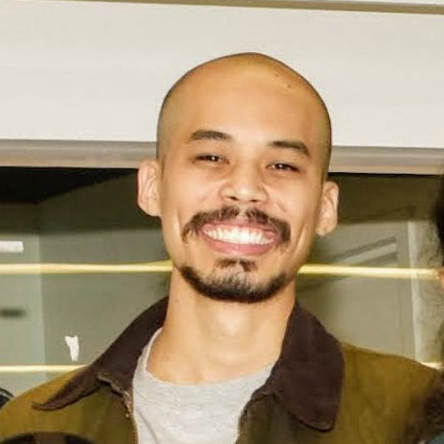 If you’ve ever donned a virtual reality headset to play a game and found yourself feeling nauseated, you’ll be grateful that Niall Williams is working to solve the problem.
If you’ve ever donned a virtual reality headset to play a game and found yourself feeling nauseated, you’ll be grateful that Niall Williams is working to solve the problem.
Williams, who is earning his doctoral degree at the University of Maryland, College Park, is leveraging techniques from visual perception, robot motion planning, computational geometry, and statistical modeling to develop rigorous algorithms for steering users through unseen physical environments. At its core, his work involves human perception: how we see and how we navigate large virtual spaces in arbitrary physical environments.
Williams, a native of Jamaica who came to the U.S. to study as a teen, had long been interested in computers but found the typical career paths for computer-science majors unstimulating. After earning an undergraduate degree from North Carolina’s Davidson College, where his bachelor’s thesis focused on redirected walking (that phenomenon whereby a virtual scene rotates around the user, giving the sense that they are continuously walking to a farther point in the distance), he decided to earn a graduate degree so that he could continue conducting research. “I couldn’t envision myself in a tech job that would just require a lot of coding,” he says.
At the University of Maryland, he is a member of the GAMMA (Geometric Algorithms for Modeling, Motion, and Animation) Lab, and he has had internship positions at such high-profile companies as Meta and NVIDIA, as part of their Applied Perception teams. Those highly selective internships constitute just a small part of his lengthy list of accomplishments: he has had multiple papers accepted at IEEE conferences, including IEEE VR 2024, and he was recently invited to give a talk on methods for natural walking in virtual reality at the Universidad de Zaragoza.
Williams is looking forward to his time at Tandon and the possibilities of collaboration with Assistant Professor Qi Sun, who oversees the Immersive Computing Lab and who is engaged in creating computer graphics and AR/VR that can be experienced just as humans perceive in real life.
“This field lets you study so many different things that go well beyond algorithms and coding,” he says. “It even extends to human perception and how we see; it involves human psychology and how we act.”



